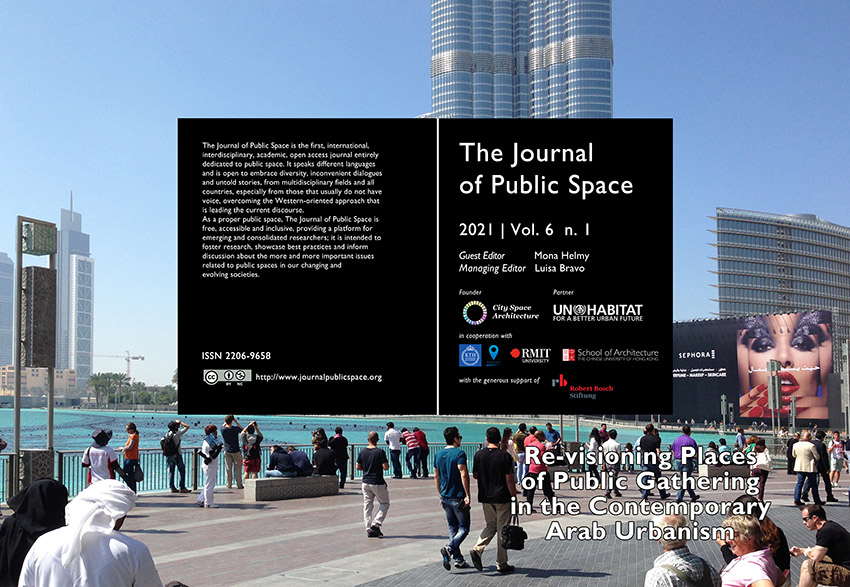On the Meanings and Uses of Urban Space in the Arab City: An Historical Perspective
##plugins.themes.bootstrap3.article.main##
Abstract
This special issue of The Journal of Public Space deals with the idea of re-visioning places of public gathering in the Contemporary Arab City. The three keywords or concept in this formulation are the “Arab city”, and “Public gathering” and “urban place or space”. It is worthwhile to spend some time interrogating each of these concepts by themselves and in a relationship to each other. We may first ask what is the Arab city? Is it a city that is truly different from its counterparts in much of the global south? It is different from the non-Arab Middle East, or for that matter other cities in the developed world that underwent substantial changes over during the last few decades. Equally important is to posit the question regarding the types of public gatherings that occur in the Arab city today which require a specific spatial accommodation. And finally, it is essential to inquire about the nature of urban space in the so-called Arab city and to interrogate how this space is used to accommodate, contain and sometimes even to restrict different forms of public activities.
##plugins.themes.bootstrap3.article.details##
The Authors retain copyright for articles published in The Journal of Public Space, with first publication rights granted to the journal.
Articles in this journal are published under the Creative Commons Attribution NonCommercial Licence (CC-BY-NC) - https://creativecommons.org/licenses/by-nc/4.0/.
You are free to:
• Share - copy and redistribute the material in any medium or format
• Adapt - remix, transform, and build upon the material
Under the following terms:
• Attribution - You must give appropriate credit, provide a link to the license, and indicate if changes were made. You may do so in any reasonable manner, but not in any way that suggests the licensor endorses you or your use.
• NonCommercial — You may not use the material for commercial purposes.
References
AlSayyad, N. (2016) “The Arab City, the Middle Eastern City, the Islamic City: Reflections on a Concept.” In Saliba, R. (ed.) Re-Conceptualizing Boundaries: Urban Design in the Arab World. London: Ashgate, pp. 31-43.
Alsayyad, N. and Guvenc, M. (2014) “Virtual Uprisings: On the Interaction of New Social Media, Traditional Media Coverage and Urban Space during the ‘Arab Spring,’ Urban Studies 51(3) pp. 1-17.
Alsayyad, N. and Bristol K. (1992) "Levels of Congruence: On Urban Space and the Institutional Structure of Different Societies" Journal of Architecture and Planning Research 9(3) pp.193-206.
AlSayyad, N. (1987) "Space in an Islamic City: A Case Study," Journal of Architecture and Planning Research 4(12) pp.108-119.

